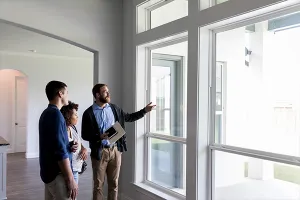The economy sent mixed signals in the middle of the second quarter. While GDP contracted in the first quarter compared to the previous quarter, inflation remained below 2.5%, but still above the Federal Reserve's 2% target. As a result, interest rates held steady. In the meantime, uncertainty in the market persists, driven by tariffs, evolving trade policies, and other macroeconomic factors that could influence market dynamics throughout 2025. Despite this, most segments of the commercial real estate market have shown resilience.
In May, office demand showed early signs of recovery but wasn’t strong enough to push net absorption into positive territory. Since then, it has slipped back onto a downward trajectory, pushing vacancy rates to new record highs. The retail market weakened as absorption turned negative since 2020, but this sector continued to remain tight. Meanwhile, industrial vacancies continued to climb, contributing to a slowdown in rent growth. At the same time, the multifamily industry remained robust, with the vacancy rate slightly coming down.
Office Properties
Office absorption declined again in May 2025 amid economic uncertainty and corporate downsizing, resulting in a 14.1% vacancy rate and a slowdown in rent growth to 0.8%. Class A posted positive annual absorption but hit a 20.5% vacancy rate; Class B held steadier with higher rent growth, while Class C remained under pressure. Major markets, such as Boston and Chicago, saw the most significant cuts, although New York rebounded to positive absorption.

Multifamily Properties
As of May 2025, the multifamily sector is showing early signs of stabilizing, with net absorption up 19% year-over-year to nearly 528,000 units and new completions down 9%. Vacancy ticked up to 8.1% as new deliveries still exceed demand, but the gap is closing. Sun Belt markets, such as Austin and parts of Florida, are experiencing sharper rent declines due to oversupply, while Midwest cities like South Bend and Rockford are outperforming. Major metros added large volumes of new units, but weaker demand in places like El Paso and New Orleans led to net move-outs.

Retail Properties
Retail demand has softened since strong pre-pandemic years, with net absorption turning negative and annual rent growth slowing to 1.7% as of May 2025. General retail is now the only segment with positive absorption, while neighborhood centers and malls posted losses but managed to reduce vacancies through inventory cuts. Although consumer sentiment declined in May, retail trade sales continued to grow, which may help offset the current uptick in store closures.

Industrial Properties
The industrial sector's post-pandemic boom is cooling as oversupply and softer demand push net absorption down 48% year-over-year to a 10-year low. Vacancy ticked up to 7.4% with new supply outpacing demand 4 to 1. Logistics remains the strongest segment, while Flex space saw net losses. Savannah and Dallas–Fort Worth led absorption, each topping 20M SF, while Los Angeles posted notable move-outs. Rent growth is slowing nationwide, but it still outpaces other sectors. However, regional disparities persist, with Dayton and Columbus seeing the biggest gains and LA and the Inland Empire facing sharp declines.

Hotel/Motel Properties
As 2025 progresses, the hospitality sector remains steady, but occupancy stands at 63.1%, still 3% below pre-pandemic levels, due to remote work and reduced business travel affecting urban hotels. Even so, room rates and RevPAR have surpassed pre-COVID benchmarks, supporting a rebound in profitability, with ADR up 22% and RevPAR up 17% compared to 2019. Hotel acquisitions have slowed slightly as investors wait for clearer signals on demand stability. Strong leisure destinations, such as Hawaii, continue to outperform, while some urban markets lag, highlighting the uneven recovery.










